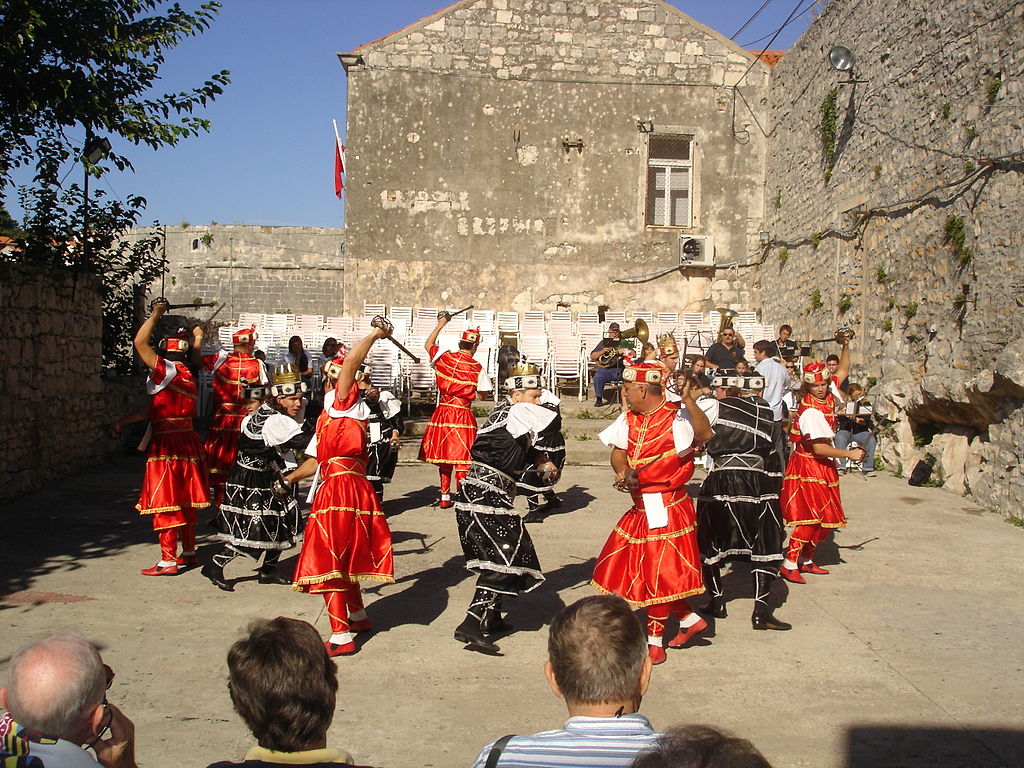Sword Dances
Sword dances exist in parts of Europe and Asia. There are dances with only one dancer. Dances with group of dancers usually perform false battles.
Chholiya is a dance from the Indian Kumaon region located in the state of Uttarakhand. It is part of local wedding celebration. It is believed its performance ensures protection from evil spirits. Music for this dance is played with numerous traditional instruments like for example turi, naghpani, dhol or nausuriya muruli. The use of bagpipe is result of British influence. Group of 14 men performs the music.
Group of 8 men performing the Chholiya wear white churidar payajama tight trousers and taanka (turban). Their face is decorated with sandal wood paste. They carry traditional tulwar swords and brass shields.
Moreška is a traditional sword dance from the town of Korčula located on the Croatian island of the same name. This dance is a false battle over young woman. Two groups of dancers were originally Moors and Christians. Nowadays they are known just as "Black" and "White".
 Moreška
Moreška
The dance used to be performed only on special occassions like the feast of Saint Theodore, who is the patron saint of Korčula. Today Moreška is danced for tourists during summer. Then the dance lasts for about 30 minutes. Main characters in this dance are Bula (young woman captured by the Black), Moro (the Black King), Osman (the White King) and Otmanović (Moro's father). The "battle" in this dance ends in the defeat of the Black soldiers. Bula gets rescued by the White King.
People of the island of Korčula have one more sword dance. It is called Kumpanija. It is danced by dance groups in several places like for example Vela Luka, Blato and Smokvica.
In Gillie Callum or "Scottish Highland sword dance" a single dancer is dancing over two swords placed on the ground in the "X" shape.
The English group of dancers called Newcastle Kingsmen is especially famous for its Northumbrian Rapper sword dance. The group also performs Grenoside longsword dance and Royton northwest dance.